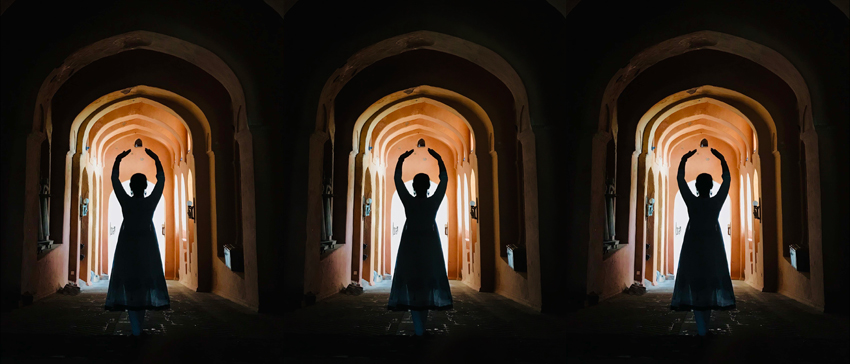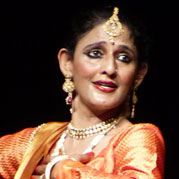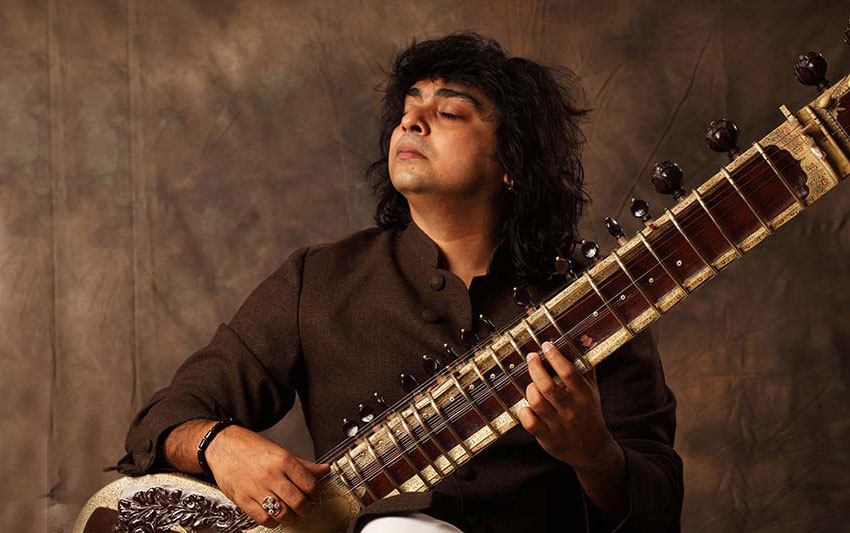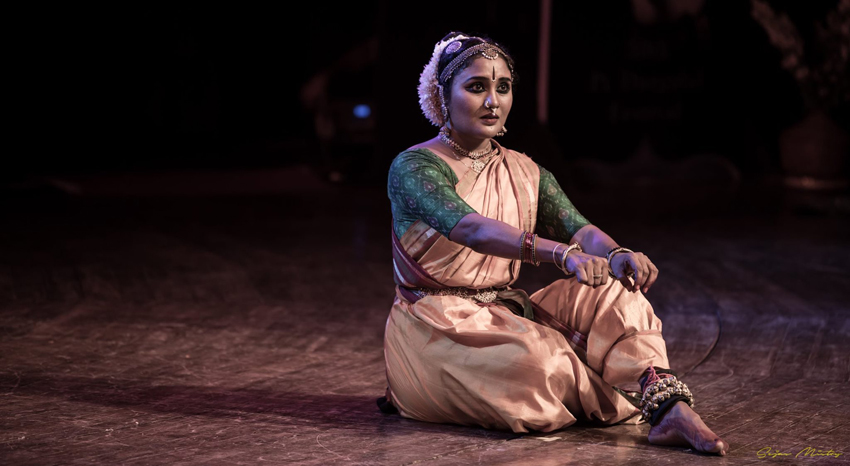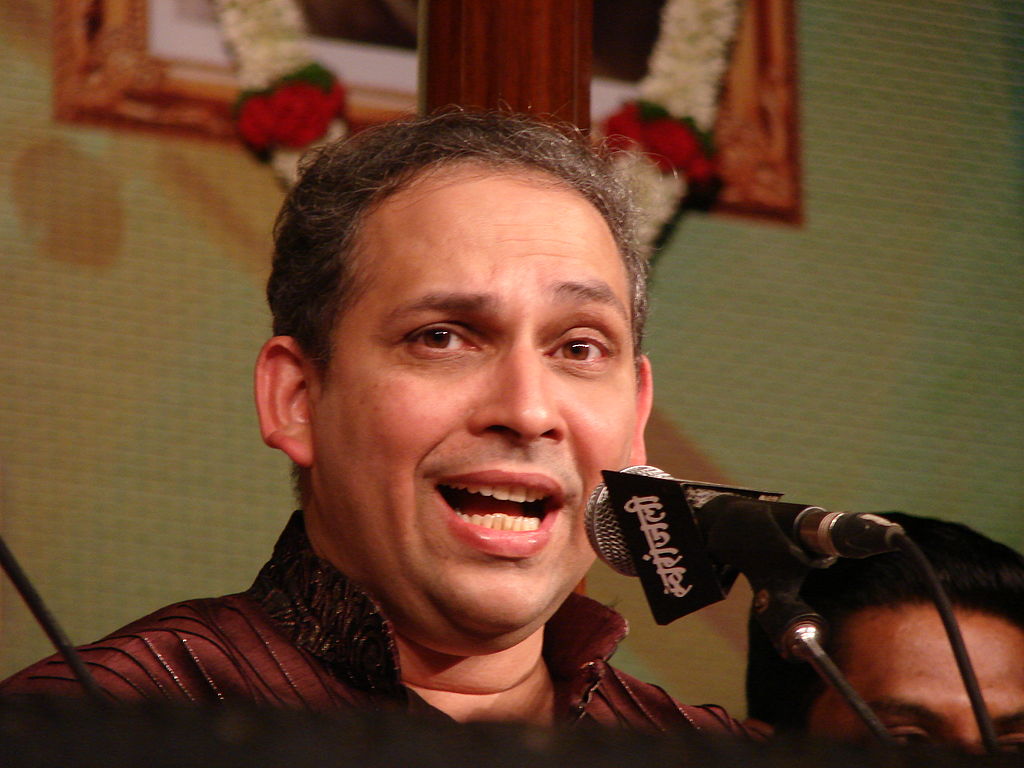The COVID-19 lockdown has allowed dancers a space to reflect. I prompted dancers Purva Dhanashree (Vilasini Natyam), Arupa Lahiry (Bharatanatyam), Shashwati Garai Ghosh (Odissi) and Divya Dikshit (Kathak) to replay, reflect, respond and re-create a feature or a built structure of a monument.
Defining Heritage Architecture
Temple Architecture – (Hindu/Buddhist/Jain traditions)
The functionality of the Temple architecture offers the audience symbolically two kinds of journeys.
- The horizontal journey – The movement of the pilgrim is from the outside of the temple to the inside. This journey starts from the Gateways, passing different parts of the temple and ends in the dark garbh-griha (sanctum sanctorum). The physical movement in the architectural design corresponds to a symbolic experience of the pilgrim. Her physical journey is the self-journey from the outside to the inside aspiring to reach to dissolve the ego and reach the void or shunya.
- The vertical journey – From the deep lower planes of the feet of the temple decorated with worldly scenes on the main body, the energies evolve towards the rising shikhara (tower). It ends at the purna ghat (the pot of fullness). Similarly, man cultivates to harness and satisfy his basic physical lower needs. He then strives to address the higher mental and wakened spiritual fullness.
Syncretic Indo-Islamic Architecture
The ethos of the Indo-Islamic architecture offers different kinds of thematic journeys:
- Equilibrium and balance are experienced in the architectural aligned pillars, arches, corridors, domes and turrets. They provide symmetry in design and arrangements.
- Convergence – Wherever on the planet you may be, the devotee faces and converges for prayers to the spiritual center the Kabba. This is evident for example, in the central keystone on which the Islamic arch is balanced.
- Light – Islam is a revealed religion. Hence, the jalis (perforated screens), the use of marble, and the running arches unravel different scenes like a film roll.
[adrotate group=”9″]
Responses:
Purva Dhanashree- Vilasini Natyam – Constructing Gopuram, Tanjore Brahadeshwar Temple – The Monumental Entrance Tower in the Dravidian Architecture
“In this lockdown, I recall the grandeur of the Brahadeshwar Temple. The performative traditions of the Devadasis and their masters the Nattuvanars were part of the temple’s ecosystem. The Nattuvanars composed, taught and accompanied the Devadasis. The Tanjore quartet nattuvanars constructed the ‘Margam’ (the formal path of a structured performance). The opening composition is the Alarippu which is comparable to the Gopuram. I begin to recreate the Gopuram. My arms rise, and as I approach the entry cusp my palms into an Anjali (divine offering). Gradually, I bring the cusped hands nearer to my heart as if to grasp the energy emanating from the towering entrance. The narratives carved on the tower symbolize levels of the energy of the five elements. I open my arms to enclose the inner space of the tower. My energized journey begins, holding the flowers I meander in courtyard, between the pillars. I stand in front of the deity. At that moment the existence of life outside the temple dissolves. A lamp lit inside the Garbha Griha ignites the lamp within me.”
Arupa Lahiry: Bharatanatyam – Constructing Doors in Indo-Islamic Architecture, Delhi
“In this time of Lockdown, I reflect on doors as the feature of the Indo-Islamic architecture. My contemplation is directed on photographs of the past which I re-construct in a video.
[adrotate group=”9″]
The past is indeed a foreign country… and (fascinating) is the manner cities (are) interpreted over Time,” writes Urban historian Narayanai Gupta. I recall dancing in response to the intriguing monuments of the Delhi Sultanate. The door in the Indo-Islamic structure is a point of soaring. As a threshold, it presents a choice whether to enter historical time or just pause before a flight. The arched structure is a point of theatrical lighted frame of revelation. It is dark beyond and lighted outside connecting several spheres – human existence with nature, the outside with the inside, the without with the within. My eyes are drawn to the circular dome and converging arches. I take the language of jathis (rhythmic patterns designed to portray taalam) to construct the lines, circles, and moving curves. Within the door, my one foot recreates the rootedness of the structure. However, the rising structure outside is captured in a joyous leap, yet I am caught in mid-air. I contemplate the lockdown – did I in the pose just freeze a moment of unity of being?”
Shashwati Garai Ghosh: Odissi – Capturing Balance in Vernacular Bengal Architecture of the Jora Shib Temple – Kolkata
The landscapes of ruins are enacted giving birth to the contemporary mythos. Inherited from the past she performs in the present.

“Coming from a family of sculptors and painters, manifestation of monuments hold a fascination. In this lockdown, I revisit my interaction with the Jora Shib Temple. The twin Shiva terracotta temples present in their solidity a sense of grandeur, history and fluid lines. The interlocked bricks have withstood the vicissitudes of time speaking innumerable stories. Through the square and circle of my dance, I move to freeze the essence of the building – ‘The Sama’. A theme of the process of transformation and balance that the temple projects with ease. The dancer in me meditates on the processes of discipline. To cultivate subtlety of neutrality, stillness in the pauses of dynamic movements. Ah! The mnemonics of rhythmic pattern – ‘Ta hom-ta hom –taka ta hom – ta the inda thei’ reverberates to perform that still yet moving grandeur.”
Divya Goswami Dikshit: Kathak – A Journey of the Keystone in Aligned Arches – Neemrana Fort, Aravali Hills, Rajasthan
“Did Time stop? In the lockdown, it appears so. A memory flashed and I was back looking at the imposing Neemrana Fort located in the age-old Aravali Hills. My stroll took me to a gallery that unfolded a range of receding, aligned Islamic arches. So perfect, multiple microdots geometrically arranged in a symphony of stone. Each arch balanced on that one inverted triangle called the keystone. Each arch combined as my arms moved in circular fluidity only to correspond and merge on that Bindu. The breath, the minor limbs sang and coordinated with the emotions frozen in the stones. In this lockdown, the contemplation was on the rhythmic patterns as much on the movements. Each contributing to define space in time, moving, freezing, dissolving and then moving again in cycles. I reach the end of the gallery of the arches, a valley opens to a new world. Perhaps that is what it will be after the COVID-19 Lockdown!”
[adrotate group=”9″]
Says Dr. Kapila Vatsyasyan renowned dance and art scholar, “Dance is the highest order of spiritual discipline…a ritual sacrifice…” As dancers, we do not merely dance against backdrops of monuments we have the geometry, the dynamic potential of ‘Performing Monuments’ and evolving the self.



